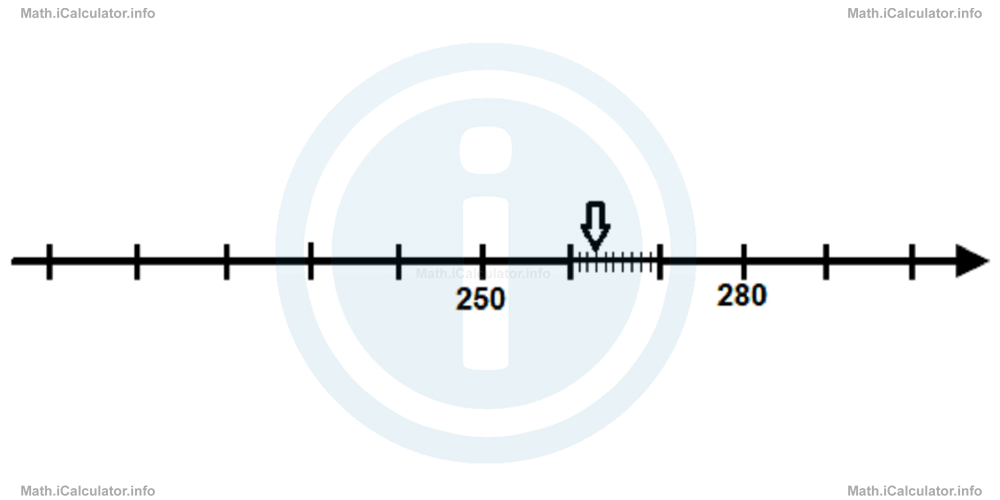Menu
Math Lesson 2.1.6 - Other Types of Rounding
Please provide a rating, it takes seconds and helps us to keep this resource free for all to use
Welcome to our Math lesson on Other Types of Rounding, this is the sixth lesson of our suite of math lessons covering the topic of Rounding and Significant Figures, you can find links to the other lessons within this tutorial and access additional Math learning resources below this lesson.
Other Types of Rounding
When the numbers involved are not integers, we may need to round them to the nearest integer. In order to do this, the original number must have at least one digit after the decimal point. Then, the known rules discussed earlier in this guide are used. For example, when we want to round the number 4.7 to the nearest integer, we get 5, as this is the closest integer to 4.7. The other integer around 4.7 is 4, which is farther than 5 from the original number.

It is obvious that in rounding to the nearest integer we must consider the first digit after the decimal place (we call it the tenth value). When this digit is 0, 1, 2, 3 and 4, the number is rounded down to the nearest integer, i.e. its value decreases to the nearest integer. On the other hand, when the value of the first digit after the decimal place is 5 or more, the value after rounding to the nearest integer increases. This is illustrated in the above example.
In addition, we may need to round a number to the nearest tenth, i.e. to write it with one decimal place. This occurs when the original number has 2 or more decimal places. In this case, we have to consider the value of the first number after the decimal point (the value of tenth therefore) to know whether the original number has to be rounded up or down.
For example, when 8.35 is rounded to the nearest tenth it becomes 8.4, while when the same number is rounded to the nearest integer, it becomes 8; when 12.62 is rounded to the nearest tenth it becomes 12.6 and when the same number is rounded to the nearest integer, it becomes 13, and so on.
Example 2
Round the number 739.46 to the nearest thousand, hundred, ten, unit (integer), and tenth.
Solution 2
When rounded to the nearest thousand, 739.46 becomes 1000, as it is closer to 1000 than 0.
When rounded to the nearest hundred, 739.46 becomes 700, as it is closer to 700 than 800.
When rounded to the nearest ten, 739.46 becomes 740, as it is closer to 740 than 730.
When rounded to the nearest integer, 739.46 becomes 739, as it is closer to 739 than 740.
When rounded to the nearest tenth, 739.46 becomes 739.5, as it is closer to 739.5 than 739.4.
We may extend this logic to rounding to the nearest hundredth, thousandth, etc. However, we will discuss these situations when dealing with decimal numbers later in this tutorial.
More Rounding and Significant Figures Lessons and Learning Resources
Whats next?
Enjoy the "Other Types of Rounding" math lesson? People who liked the "Rounding and Significant Figures lesson found the following resources useful:
- Other Feedback. Helps other - Leave a rating for this other (see below)
- Approximations Math tutorial: Rounding and Significant Figures. Read the Rounding and Significant Figures math tutorial and build your math knowledge of Approximations
- Approximations Video tutorial: Rounding and Significant Figures. Watch or listen to the Rounding and Significant Figures video tutorial, a useful way to help you revise when travelling to and from school/college
- Approximations Revision Notes: Rounding and Significant Figures. Print the notes so you can revise the key points covered in the math tutorial for Rounding and Significant Figures
- Approximations Practice Questions: Rounding and Significant Figures. Test and improve your knowledge of Rounding and Significant Figures with example questins and answers
- Check your calculations for Approximations questions with our excellent Approximations calculators which contain full equations and calculations clearly displayed line by line. See the Approximations Calculators by iCalculator™ below.
- Continuing learning approximations - read our next math tutorial: Upper and Lower Bounds. Intervals and Segments
Help others Learning Math just like you
Please provide a rating, it takes seconds and helps us to keep this resource free for all to use
We hope you found this Math tutorial "Rounding and Significant Figures" useful. If you did it would be great if you could spare the time to rate this math tutorial (simply click on the number of stars that match your assessment of this math learning aide) and/or share on social media, this helps us identify popular tutorials and calculators and expand our free learning resources to support our users around the world have free access to expand their knowledge of math and other disciplines.